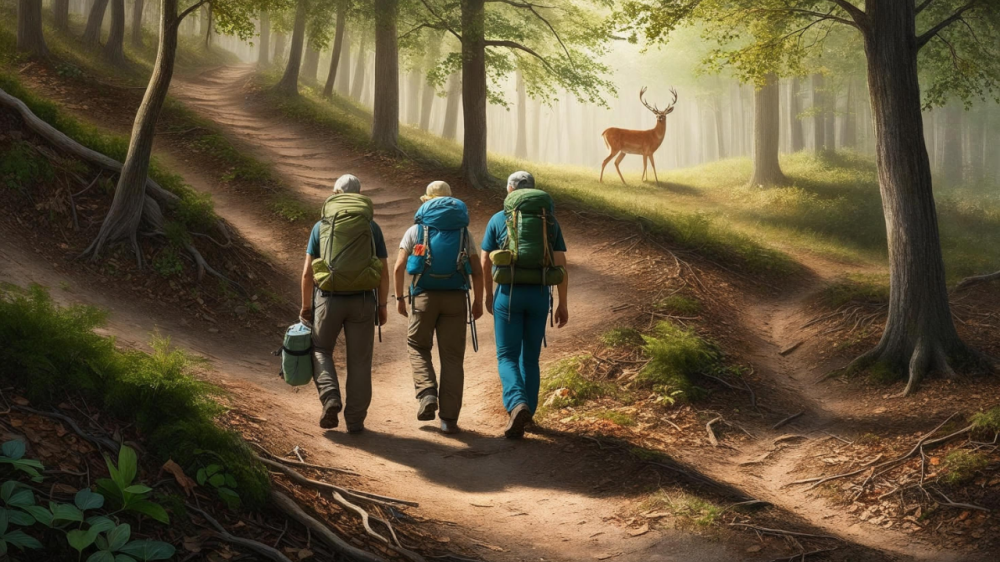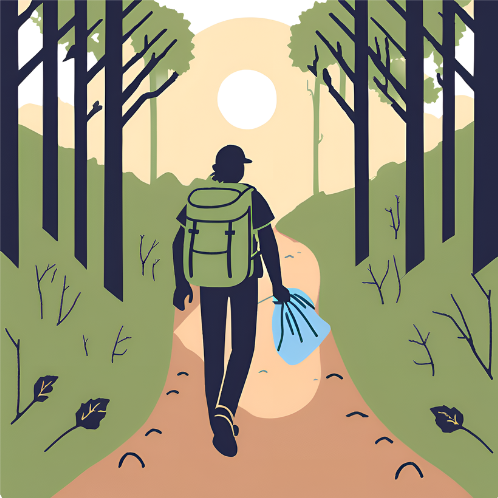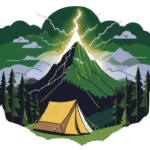Leave No Trace (LNT) principles aren’t just guidelines or an acronym—they’re a lifeline for our wild places. These ethics, developed by the Leave No Trace Center for Outdoor Ethics and supported by organizations like the National Park Service (NPS), help keep nature wild, clean, and accessible for everyone.
Whether you’re pitching a tent deep in the backcountry or enjoying a day hike at a national park, LNT offers a simple blueprint for doing the right thing in nature.
🧭 Why Leave No Trace Principles Matter
💚 It’s About Respect
At the heart of Leave No Trace is a simple truth: we all love nature. But with more people heading outdoors, we need a shared set of rules to protect these spaces. That’s where LNT comes in—offering a common language of stewardship and sustainability.
🌎 A Cleaner Planet Starts With You
When you leave a campsite and it looks like no one was ever there—no trash, no damage, no noise—that’s the LNT dream. It’s about leaving nature better than you found it, one visit at a time.

🛡️ The Five Pillars of Conservation
🌱 1. Ecosystem Protection
Stick to designated trails and camp on durable surfaces. This prevents soil erosion and damage to native plants from too much foot traffic.
🐾 2. Wildlife Conservation
Admire animals from a distance. Feeding wildlife may seem harmless, but it disrupts natural behavior and can lead to dependency or danger.
🌄 3. Landscape Preservation
By not creating new campsites or altering natural surroundings, you’re preserving natural beauty for future visitors to enjoy.
🤫 4. Enhanced Outdoor Experience
Quiet trails, trash-free paths, and natural sounds—these are the joys of a well-maintained environment. Everyone benefits when we all follow LNT.
♻️ 5. Long-Term Sustainability
LNT reduces long-term damage from overuse. When we all practice these principles consistently, nature stays wild and welcoming.
📜 The 7 Leave No Trace Principles
These seven core principles are your guide to low-impact outdoor adventures:

1️⃣ Plan Ahead and Prepare
- Know the rules and terrain.
- Avoid peak times and overcrowded spots.
- Travel in small groups and repackage food to reduce waste.
2️⃣ Travel and Camp on Durable Surfaces
- Stick to existing trails and campsites, don’t create your own.
- Prevent contamination, camp at least 200 feet from water sources.
- Avoid camping or hiking in fragile or recovering areas.
3️⃣ Dispose of Waste Properly
- Pack it in, pack it out.
- Use catholes for human waste—6 to 8 inches deep, at least 200 feet from water.
- Carry out all hygiene products and food waste for proper disposal.
4️⃣ Leave What You Find
- Don’t touch cultural or historic artifacts.
- Always leave rocks, plants, and natural features undisturbed.
- Prevent spreading invasive species.
5️⃣ Minimize Campfire Impacts
- Use stoves instead of fires when possible.
- If building a fire, use only the dead and downed wood you find.
- Burn wood to ash, then scatter the cooled ashes and dismantle fire rings.
6️⃣ Respect Wildlife
- Observe from afar; never feed any animals.
- Store food securely to avoid wildlife encounters.
- Keep pets leashed or leave them at home.
7️⃣ Be Considerate of Other Visitors
- Yield on trails, stay quiet, and don’t intrude into your neighbors campsite.
- Let nature’s sounds be your concert hall.
🛠️ How to Practice Leave No Trace in Real Life
📋 Make a Checklist
Before your trip, prep a list that includes regulations, gear, food plans, and waste solutions. Once LNT becomes second nature, you won’t need the checklist anymore.
🥾 Practice Trail Etiquette
Stick to paths, don’t cut switchbacks, and yield when needed. Little actions can have big impacts.
🗑️ Carry Out Trash
Always bring a bag(s) for your garbage. Even the little stuff like fruit peels, wipes, or crumbs need to be trashed and carried out.
🔥 Be Smart About Fires
Use camp stoves or fire pans. Only build fires in designated rings and never leave a smoldering campfire.
🐻 Keep Wildlife Wild
Store food in bear-safe containers and never approach or feed wild animals. It’s for their safety—and yours. Rule 1: Wild animals are unpredictable! Give them space and enjoy from a distance.
❓ FAQ: Leave No Trace Principles
To reduce the environmental impact of outdoor recreation by following ethical practices that protect nature and wildlife.
Yes! Each one addresses a different aspect of stewardship. Together, they make a complete low-impact approach.
No. Even biodegradable soap can pollute. Wash 200 feet from water and scatter strained dishwater.
No. “Leave What You Find” ensures natural and cultural features remain for others to enjoy.
🌍 The Power of Collective Responsibility
Embracing Leave No Trace principles isn’t about perfection—it’s about participation. Each small, mindful action ripples outward, making a real difference. Practiced collectively and the impact is incalculable.
The NPS and the Leave No Trace Center provide excellent educational tools to help you deepen your understanding and become a stronger advocate for our wild places.





Lots of very valid points made in this article. I love the outdoors, and especially the summertime activities – camping, hiking, fishing, and all that goes with that. I get so aggrevated with people, that I know knows better, violate the very principles of that everyone should possess from common sense. They just throw trash down anywhere, when there is a trash can not 20 feet from them. It’s a lack of respect for themselves, others, and mother nature. Hopefully more people will read this and learn from it as well. Thanks for the article!